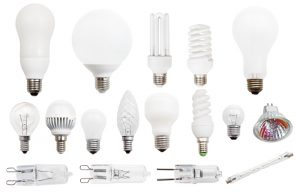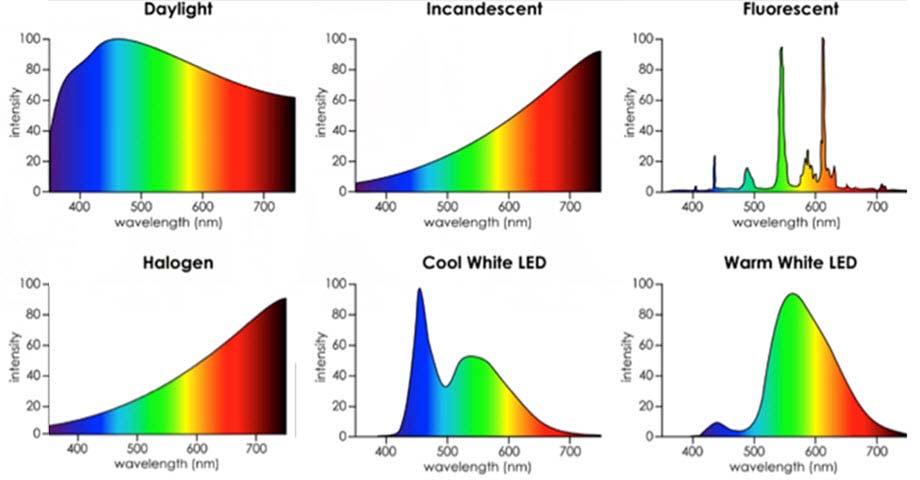 You have probably noticed that LED’s (Light Emitting Diodes) are found everywhere at the moment. They are energy efficient and don’t contain mercury – making them a supposedly greener alternative than the old fashioned light bulbs many of us grew up with.
You have probably noticed that LED’s (Light Emitting Diodes) are found everywhere at the moment. They are energy efficient and don’t contain mercury – making them a supposedly greener alternative than the old fashioned light bulbs many of us grew up with.
BUT, LED’s are not without their faults.
What the fine print doesn’t tell you is that using LED lights could seriously affect your health.
DO LED lights make you sick?
LED’s may not contain mercury, but they are loaded with lead, arsenic and multiple other dangerous substances. Have you ever been told to be very careful not to break an LED light bulb?
That’s because they’re packed with toxic substances.
If you do accidentally break a bulb in your home you have to be careful not to breathe in the fumes it releases. It is recommended that you sweep up the debris wearing a mask and gloves – and ensure that it is sealed away. Then you should take it to your local battery and light bulb disposal centre to be discarded. Many shopping centres have these.
Do not throw it away in your regular trash!
According to studies by the University of California, the red LED lights are the worst. They have up to eight times more lead in them than the white lights. The white LED’s, however, contain the most nickel, another heavy metal, which is known for causing allergic reactions.
Copper is another nasty in LED bulbs. Copper accumulates in our lakes and rivers, poisoning first fish and then the people and animals who eat them.
Another negative health factor of LED bulbs is the light they emit, itself. Old fashioned bulbs with a filament (the non-toxic, relatively harmless bulbs which used too much power) created a yellow spectrum light that was generated through the heating of the filament. It was a more natural form of light and didn’t emit a lot of light outside of the visible spectrum.

LED’s emit large amounts of light from the blue light spectrum. This light doesn’t always register on the naked eye, but it’s effects are clearly visible. For example we know that there are colours in the rainbow which we can’t see because they are outside of the human visibility spectrum.
But we still feel them as heat. The Red light spectrum is known as infrared and it can be used in healing therapies. The light on the blue end of the spectrum is also powerful, but incredibly harmful to us. This is the light in LED’s, computer screens and mobile phones.
LED’s create what we call light pollution in the home and at work, and all of the places where we spend our time. This type of light, especially when you are exposed to it after the sun has gone down (and your body should be starting the process of naturally shutting down shop for the night – a process triggered by the fading light) causes disruption to the circadian rhythms.
The circadian rhythm is a natural 24 hour cycle that we (and all plants and animals) go through. It involves your sleep cycles, active cycles and eating habits. Basically, it controls the biological queues for everything we do.
When the cycle is disrupted by exposure to the blue light spectrum after sundown, you start to have trouble sleeping, unwinding and relaxing. This in turn triggers all kinds of disorders and health issues from depression and anxiety to problems with your metabolism and even organ dysfunction.
It is even accredited to contributing to obesity and kidney dysfunction. Needless to say, anything that inhibits sleep and mental restoration, affects your cognitive abilities in the day time too, making you literally less smart. Other health problems include mitochondrial dysfunction – which in turn can cause metabolic disorders and even cancer.
This phenomenon is called light pollution, and it has unexpectedly dire effects on our health.
Aside from those outlined above – the blue light from LED lights is also believed to accelerate macular tissue breakdown in your eyes. This causes cataracts, blindness, and oxidization of your eye tissue.
If you work at a computer for several hours a day you probably already have a good idea of the eye strain and headaches this can cause. That is because of the blue light you are being exposed to at close range.
You may be asking yourself, what can I do about Light Pollution?
Many people are stock piling old fashioned filament light bulbs like the one invented by Thomas Edison. However, these are not always available, and often you are not in control of the light source you are exposed to – for example at work or office.
If that is the case, there are other things you can try to lessen the effect of the blue light. Some people are wearing blue light blocking glasses. These stop the blue light waves from entering your eyes and affecting your natural circadian rhythm.
On a smaller scale, you can also buy screen covers that block the blue light from your computer screen. Or you can download various apps for both your PC and your mobile device that lower the blue light emissions from your device. It is well worth your while to look into your options, especially if you spend more than an hour a day looking at a computer screen, tablet or smart phone.
If you are buying LED lights, try to look for coloured lights that limit the amount of blue light coming through. There will often be the option of a “warm” light. This light has more yellow and red in it, and is less harmful than blue light.
Even the American Health Association recently released guidelines for healthy public lighting which recommends doing away with high intensity LED lights altogether.
It is also recommended that we choose analog light forms rather than digital light forms. What’s the difference?
Digital light includes your halogen and LED lights. They are the newer light forms which create incredibly bright light with minimum energy. Unfortunately, as we have seen, they are incredibly bad for us.
Analog lighting refers to more natural light sources. These include incandescent light bulbs and even candle light. Believe it or not, using un-scented candles for your lighting after the sun goes down could be really good for your health. They mimic the natural lighting you should be experiencing and help your brain to kick into the next cycle of your day – rest, sleep, and restoration.
Start by reducing the amount of LED light in your environment. Even if you can’t find incandescent bulbs in your area any more – there is still a lot you can do. Minimize the number of lights you have turned on around. Use candles or oil burning lamps if you can.
Protect your eyes with blue blocking glasses and don’t forget to apply a filter to your computer screen.
Go to the next page and find out how you can protect your eyes from blurry and unclear vision, dry eyes, age related macular degeneration, cataracts –

About the Author:
Emma Deangela is the best selling author of The Alkaline Diet Program and 80/20 Fat Loss. She has helped over tens of thousands of men and women to lose weight and transform their health with sound nutrition advice. Learn how you can lose weight fast – How to lose weight by adding these alkaline foods.
Are your sleep and eyes affected by LED lights?
Which wonderful friends in your life would appreciate this information about LED lights?
Please help them by sharing this eye-opening article with each of them using any of the social media and email buttons below.

Leave a Reply to Gary Cancel reply